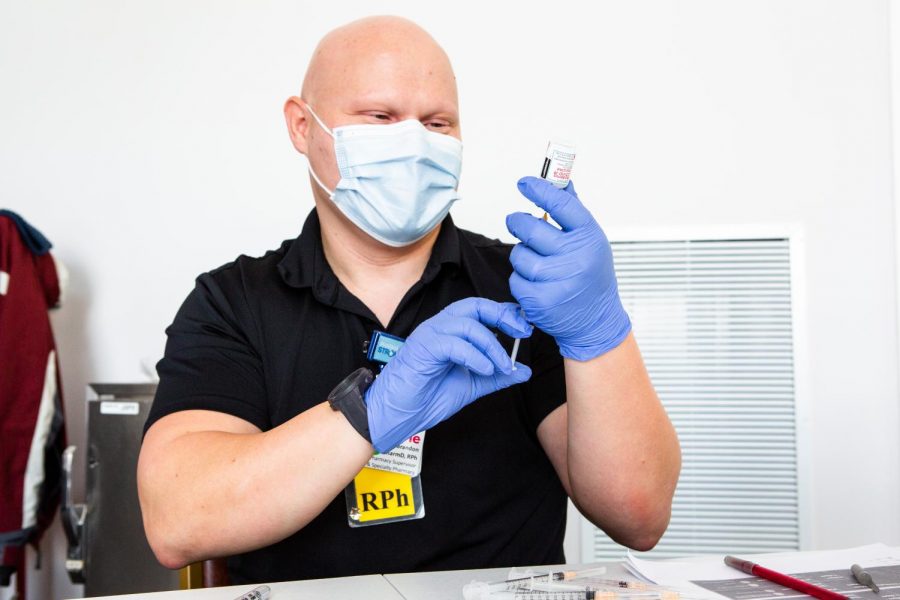Vaccine push continues, individuals under 16 key group to attaining herd immunity
A pharmacist at the Church of the Living God fills a syringe with a Moderna vaccine on Feb. 20. Community members 16 and under are the next in line to obtain the vaccine and receive herd immunity.
April 1, 2021
As vaccines become more widely available, making people under the age of 16 eligible for the vaccine is the next step in order to attain herd immunity.
When it comes to attaining herd immunity, Deputy Administrator and Epidemiologist at the Champaign-Urbana Public Health District Awais Vaid mentioned that “a significant number of people in our county have tested positive so there is already a level of immunity.” In addition, as vaccines become more widely available, the community could be closer to attaining herd immunity.
However, both Vaid and Rebecca Lee Smith, epidemiologist and associate professor in Veterinary Medicine, agree that herd immunity cannot be attained until the vaccine becomes available to children under the age of 16. According to Vaid, 40,000 people in the county are under the age of 16 and it may take months for them to become eligible.
The CUPHD gets a limited amount of vaccines from the state every week they then make available to the Champaign-Urbana community, according to Vaid.
Despite the vaccine becoming more widely available, the distribution is still limited. Vaid said that only about 27% of the entire county population has received full doses of the vaccine.
Smith urges people who are vaccinated and unsure of what they can and cannot do to follow guidelines set by the Centers for Disease Control and Prevention.
According to Smith, the clinical trials conducted regarding the vaccines were designed in order to measure how effective the vaccines were at preventing hospitalization and death after people become infected with COVID-19.
“When we talk about the vaccine being 80% effective in trials, we mean it was 80% effective in protecting hospitalization and death,” Smith said.
In terms of how successful the vaccines are at preventing infection, Smith explained that experts aren’t certain about that yet, as there is not enough data available to determine that.
Vaid said that anybody eligible and able to get a vaccine should receive a vaccine, as all three approved vaccines have gone through very strict processes in order to ensure safety before obtaining approval from the Food and Drug Association.
“The end result of the vaccine is that people, if they take a vaccine, it will protect them from severe complications, hospitalizations and death,” Vaid said.
Robin Kaler, associate chancellor of Public Affairs, says that the University would ideally like to be able to offer the vaccine to all students by the beginning of the fall semester in order to have an extra level of safety.
As more students get vaccinated, Smith and Kaler urge them to abide by the guidelines set by the CDC in order to ensure the safety of themselves and the community.







